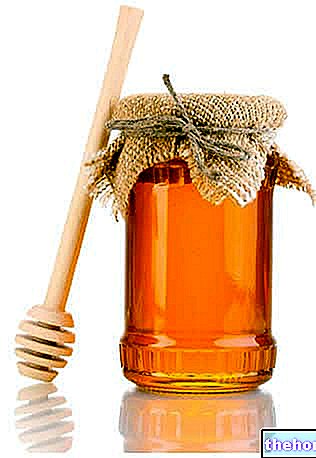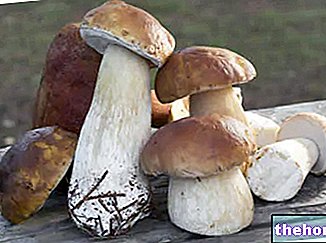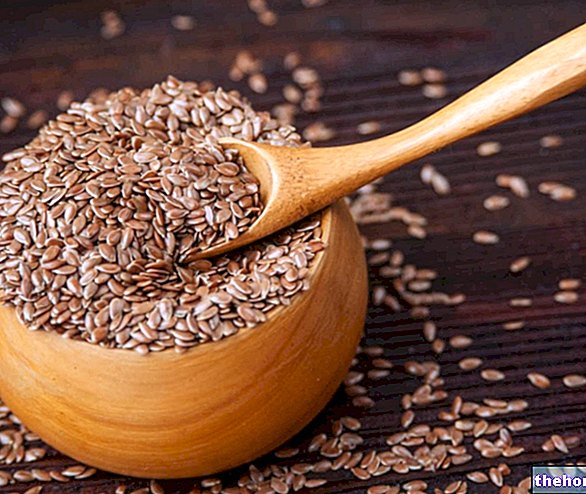In collaboration with Dr. Eleonora Roncarati
Guided crystallization techniques
As an alternative to liquid honey, techniques have been developed that allow guiding the natural tendency to crystallize honey towards finished products that are completely crystallized, stable, homogeneous, with a pleasant appearance, with a creamy consistency and pleasing to the consumer.

The simplest technique consists in mixing liquid honey (still naturally liquid or liquefied) with completely crystallized honey, fine crystal, in the proportion of 9 to 1. The mixture must be made at a temperature that allows easy mixing, without the incorporation of air bubbles and which, at the same time, is not too high so as not to dissolve the crystals introduced. In practice, it operates between 24 and 28 ° C. The honey is then put into jars, possibly after decanting for a few hours to eliminate the built-in air bubbles. The jars should then be placed at a temperature of 14 ° C (or temperatures as close as possible to this value). Within a few days the crystallization is completed, providing honey with fine crystallization, with a more or less compact consistency depending on the water content. humidity, due to the formation of transversal crystals, which give the honey the structure of a solid. A further problem develops in conjunction with this type of structure: the formation of whitish outcrops, on the surface and in correspondence with incorporated air bubbles. , due to the superficial evaporation of the water and the drying of the glucose crystals, which appear so white. This is a purely aesthetic defect, but serious as it compromises the acceptability by the consumer. To avoid this problem it is necessary to adopt procedures that allow to separate the crystals from each other and thus give the completely crystallized honey a creamy consistency. One of the techniques adopted to obtain a creamy product consists in operating in two distinct phases. In the first phase a guided crystallization is produced under the conditions described above; the inseminated honey is then left to crystallize in large capacity containers (25 - 300 kg) at a temperature of 14 ° C. At the time of potting, the drums are brought into a hot chamber at a temperature of 28 - 30 ° C until the honey (without fusion), which is then passed into a homogenizer, which separates the crystals and then jars (Gonnet, 1985 and 1986). An "other technique that can be adopted consists in keeping the honey in mixing, after insemination, at temperatures in which the crystal formation is possible (around 20 ° C or lower). The agitation greatly accelerates the formation of crystals and in 2 - 3 days the crystallization is completed and the honey can be put into jars, possibly raising the temperature by a few degrees, to facilitate the flow. The difficulty of this technique lies in the agitation of a mass of cold and therefore very viscous honey, which in addition to requiring considerable mechanical strength, risks incorporating air and therefore producing foam. It is therefore necessary to operate with sufficiently powerful systems, with propellers that remain completely immersed in honey and that rotate at a limited speed (a few revolutions per minute).
Potting
Once clear due to the elimination of air and before crystallization begins, the honey can be put into jars (for retail sale) or poured into cans or kegs (for wholesale). A machine is used to make a jar. called a potting machine.
Under normal conditions, the steps that lead to honey potting can take place under natural conditions, without carrying out any heat treatment. However, some processing plants apply heating systems to melt crystallized honeys, decrease viscosity and thus facilitate the decanting process. , filtering and potting.
The honey, however it is treated, undergoes the jars in the final packaging intended for the consumer. These can be of various shapes and capacities: the material by far the most widespread in Italy today is glass. Plastic packaging is also quite common, while metal coated with materials suitable for contact with food (plastic or vitrified paint) and paraffin cardboard have practically disappeared today. storage and the materials used must obviously be suitable for contact with food. The glass jar with the twist-off cap gives the best guarantees of sealing, followed by the other closing systems and plastic jars in general. Honey also lends itself to being packaged in a specific way for particular uses, for example in ceramic jars for gift packaging, in plastic or aluminum tubes or coupled for use in the open air (sportsmen, hikers), or for children ( soft plastic packaging in the shape of animals). Single portions are currently quite widespread: apart from small glass jars (30 or 40 g), which are also suitable for manual packaging, the other types of single portions (thermoformed trays, sachets) require specific equipment not within the reach of small companies. beekeepers. The dosing system can be manual (with the cut-off taps that ripeners and a scale for weight control are commonly equipped with) or more or less automated. Also in this phase, care must be taken so that the honey does not incorporate air which is likely to be sucked by the dispenser.
Furthermore:
- There must be no traces of product on the edge of the jar, which, in addition to compromising the seal of the jar itself, would turn into unsightly black residues in contact with the air and with the metal capsule.
- It is necessary to check that the jars used are sufficiently clean and free of dust, and if this is not the case, the same attention must be paid to the capsules as well.
- We remind you that the thin seal of the capsules absorbs odors very easily: it is not uncommon to open a jar of honey and smell a smell of detergent, cosmetics, medicines, essential oils or different foods, due to the storage of new capsules near these materials or to the recycling of the capsules themselves.
- The presentation of the finished product must take into account, in addition to the technical aspects, which we have dealt with up to now, and commercial, a series of legal obligations, relating to the presentation of the product (labeling), of which the packer must be aware. .
Storage
Storage is an important phase for honey as a high temperature, exposure to the sun or other incorrect operations can compromise the quality, flavor and even the edibility of the product.
storage
INTRODUCTION: honey is liquid extracted but, in most cases, after a short time it tends to crystallize at common storage temperatures. The crystallization process involves the formation of glucose crystals, in different quantity, form, and arrangement depending on the conditions in which the crystallization itself took place.
Generally, the longer the time in which this occurs, the more voluminous are the crystals; the different honeys have a different tendency to crystallize depending on the composition (the lower the water content and the higher the glucose content, the greater the tendency to crystallize) and the storage temperature. The rate of crystal formation is: maximum a 14 ° C, while a is inhibited at temperatures above 25 ° C and below 5 ° C; also the presence of solid particles in suspension and the agitation favor crystallization. Only honeys with a proportionally high fructose content remain naturally liquid for a long time. Furthermore, all honeys contain yeast cells, microorganisms responsible for alcoholic fermentation; under normal conditions, the high sugar concentration of honey prevents their development but, if the water content is high, yeasts can develop on the glucose giving rise to fermentation with the formation of alcohols, acids and carbon dioxide. Conditions favorable to the fermentation are: water content of 18%; temperature of about 16 ° C; a fermented honey is not harmful to health, but in addition to being a degraded product, the law prohibits its marketing for direct consumption and therefore represents an irreversible and very serious damage that honey can undergo during storage.
Other articles on "Honey Production - Guided Crystallization, Potting and Storage"
- Honey Production: Pasteurization and Techniques to Keep It Liquid
- Honey - Definition, Types of Honey and Production Techniques
- Honey Production: Uncapping, Honey Extraction, Decanting and Filtration, Heating
- Honey - Storage and Labeling
- Honey and Diet - Composition and Nutritional Properties




























